
GUEST BLOGGER DEB GONZALES
It’s remarkable to think about the transformation just one water molecule undergoes in its journey through the water cycle. And, that water molecules, in all their various forms, have been recycled since the prehistoric era. It’s really cool to consider how the water molecules in a mud puddle and a bead of sweat have a great deal in common. Since we all know that experience is the best teacher of complicated concepts, one of most memorable ways for kids to experience wonders of the water cycle is to play a classroom game called Water Molecules on the Move. This game is STEAM at its best! Water Molecules on the Move makes the concepts of evaporation, precipitation, accumulation, and condensation come alive in comprehensive, interactive, and entertaining ways.
Introduce the water cycle
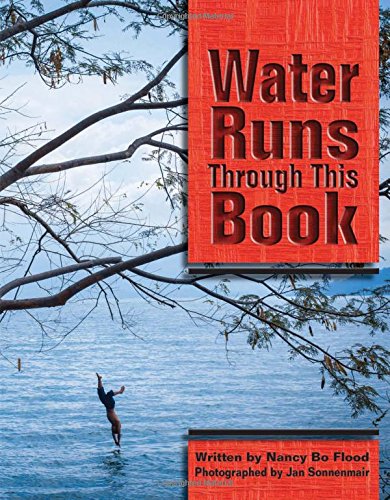
Prepare students to play Water Molecules on the Move by familiarizing them with the never-ending motion of the water cycle. The lively interactions of the game will make more sense when students have a basic understanding of its interconnected its properties; that water heated by the sun evaporates to create condensation in the form of clouds, and that different types of precipitation eventually accumulate to form various bodies of water. Once students have a grasp of these principles, they are game ready.
Prepare water molecules materials
- Download pre-made templates from my website. These templates are part of an in-depth activity guide crafted for a fascinating book of STEAM poetry entitled Water Runs Through This Book and are free for the taking. Game pieces include 6 foldable number cubes, 6 Location Cards, and a variety of Water Molecule Slips. Detailed instructions to construct game pieces as well as to play Water Molecules on the Move are described in the activity guide. Put it all together and let the water cycling begin.
- Cardstock
- Tape
- Scissors
- Six tables arranged in far-reaching areas of the classroom.
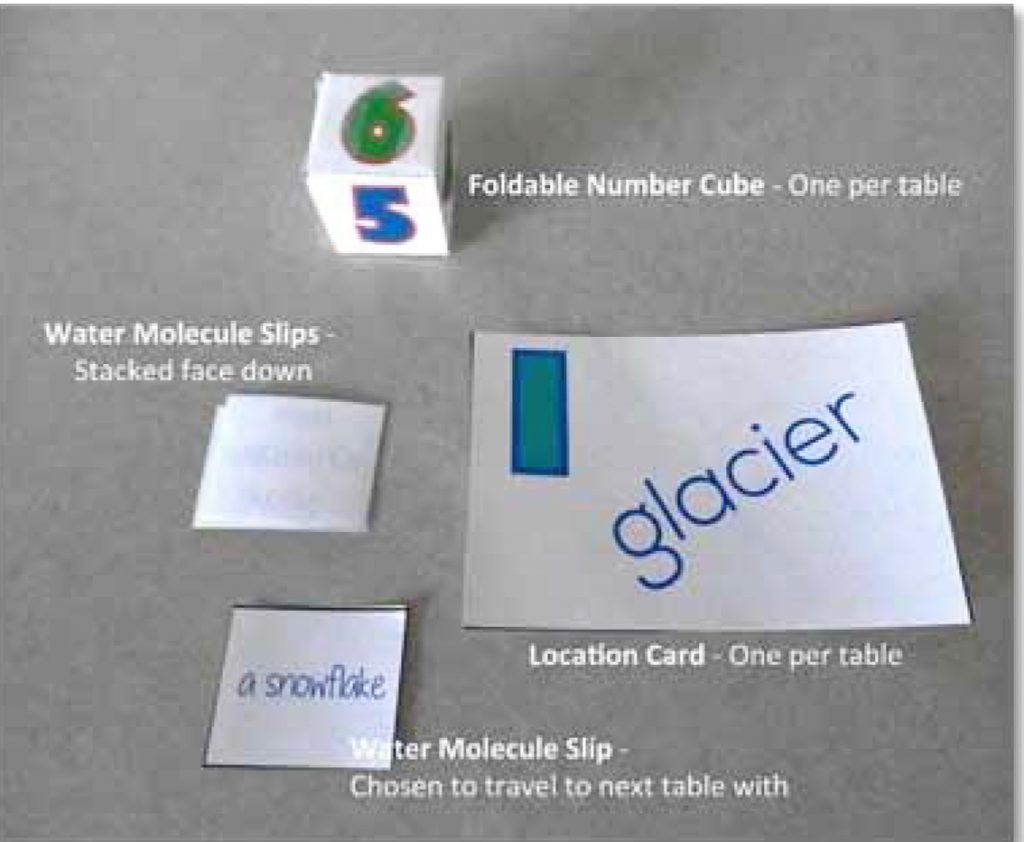
- To summarize the game and its parts, let’s begin with the Location Cards, which represent places where water molecules exist. Each index-card sized Location Card is numbered from 1 to 6 and labeled with terms such as glacier, clouds, your body, the ocean, a river, and a watershed.
- The Water Molecule Strips included in the guide, inspired by the poems featured in Water Runs Through This Book, describe water molecules in various forms such as tears, rain drops, water vapor, and doggie drool.
- A sheet of blank Molecule Strips have been included in the activity guide for students to list their own examples of water molecule sources such as a dew drops or dinosaur dribbles.
- Six copies of the Foldable Numbered Game Cubes need to be trimmed, folded, and taped together. Now you’re ready for some game action!
How to play Water Molecules on the Move
- Set up the game by placing one Number Cube, one Location Card, and a generous stack of Water Molecule Slips on each classroom tabletop.
- The students begin the game by standing beside one of the prepared tables.
- After choosing a Water Molecule Slip, they roll the Number Cube.
- Taking their Molecule Slip with them, students move through the Water Cycle to land in different labeled place.
- For example, the water molecules that comprise a snowflake from a glacier (Location Card #1) might transfer to a watershed (Location Card #6).
- To continue the game, students exchange their Water Molecule Card for another in the stack at the new location, roll the dice, then move to the next table. For instance, the water molecules that created a snowflake now become fog that is transferred to your body (Location Card #3).
- Once students understand the game procedure, encourage them to move quickly through the Water Cycle, giving a sense of how rapidly ageless water molecules transform.
Students discuss reactions
At the game’s end, gather the students together to discuss their reactions to Water Molecules on the Move. Ask them to determine how the four phases of the water cycle – evaporation, precipitation, accumulation, and condensation – were represented in the game. Encourage them to explore the remarkable notion that there is the same amount of water on Earth today as there was when it was formed, that water molecules have been on the move since the beginning of time.

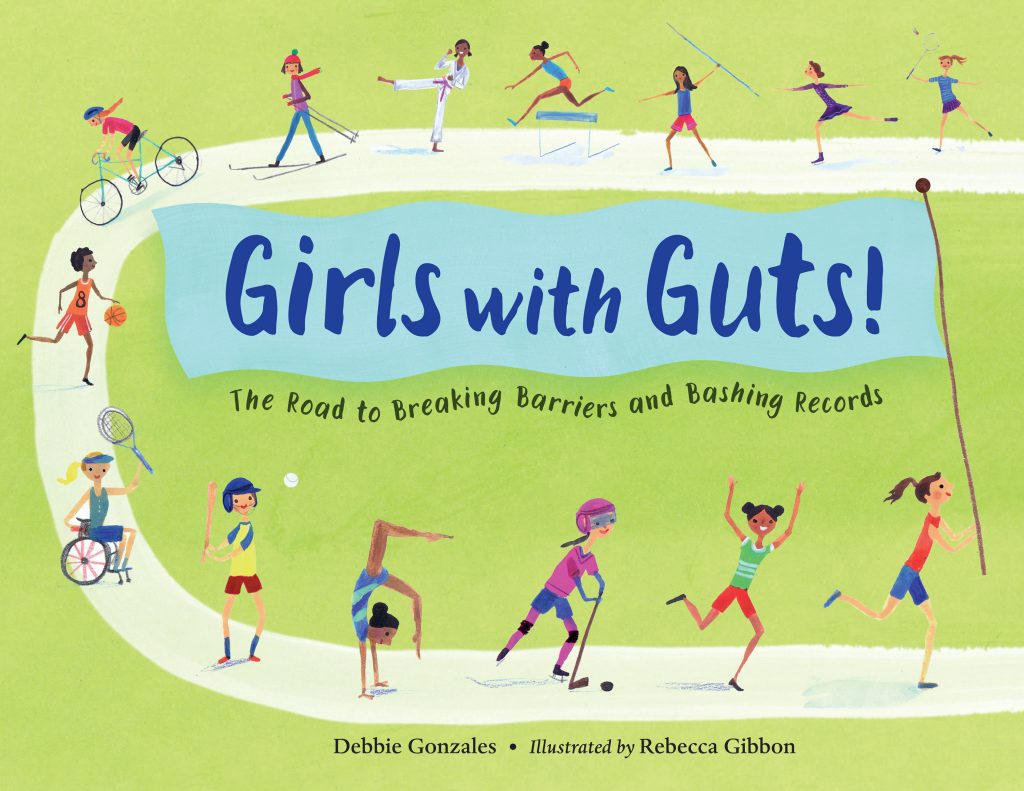
Debbie Gonzales is a career educator, curriculum consultant, former school administrator and adjunct professor, a podcaster (The Debcast), and past SCBWI RA for the Austin Chapter. Deb currently devotes her time to writing middle grade novels, crafting teacher guides and various other freelance projects. She’s the author of six transitional readers for New Zealand publisher, Giltedge, and the non-fiction picture book Girls with Guts: The Road to Breaking Barriers and Bashing Records (Charlesbridge, 2019). Deb serves as a member of the Michigan Reading Association board and earned her MFA in writing for children and young adults from the Vermont College of Fine Arts. Learn more about Deb and her many projects by accessing her websites at www.debbiegonzales.com and www.guidesbydeb.com.
Featured image: https://www.noaa.gov/education/resource-collections/freshwater-education-resources/water-cycle


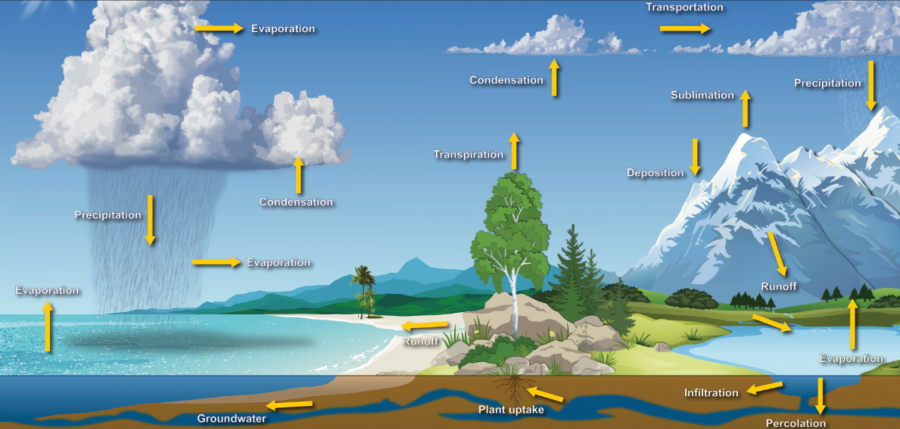
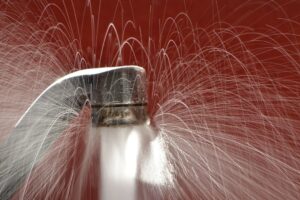
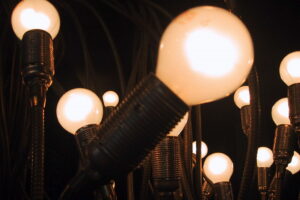
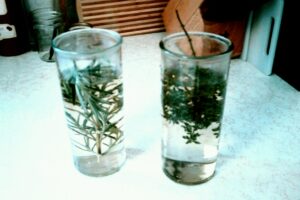


Leave a Reply
Your email is safe with me.